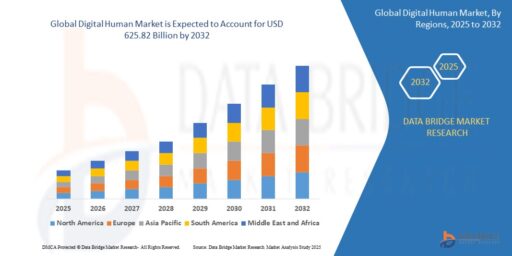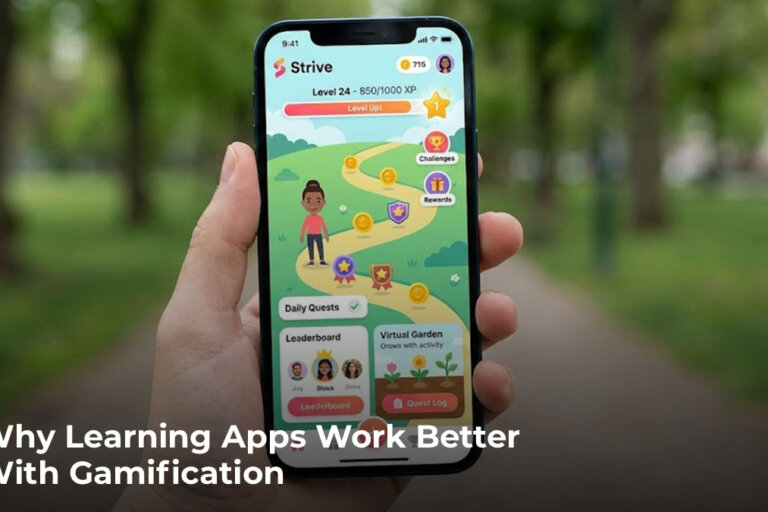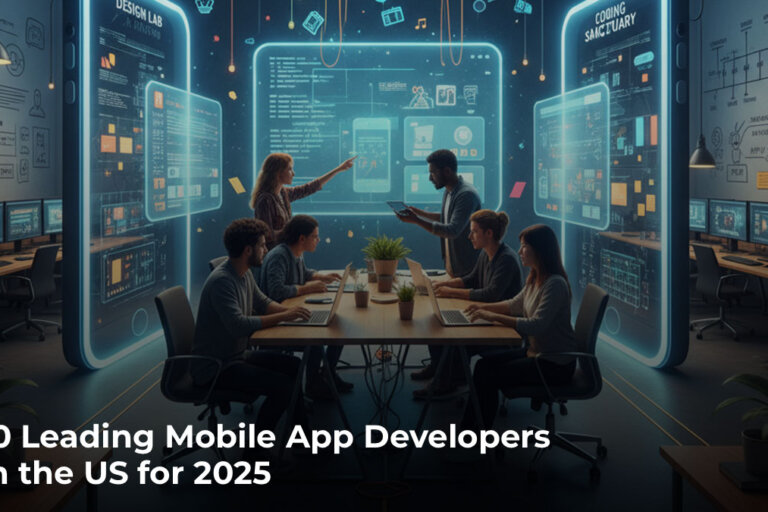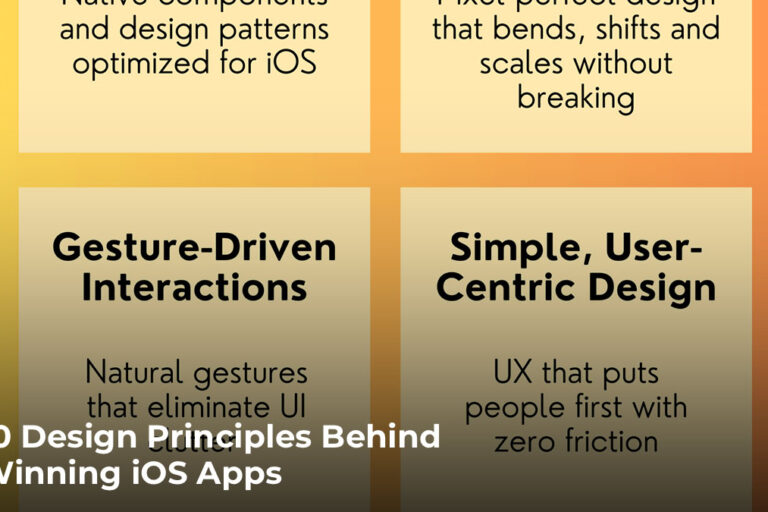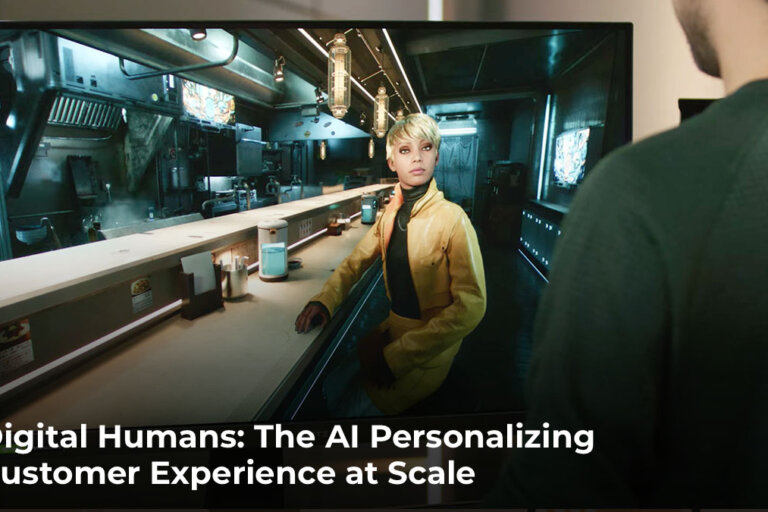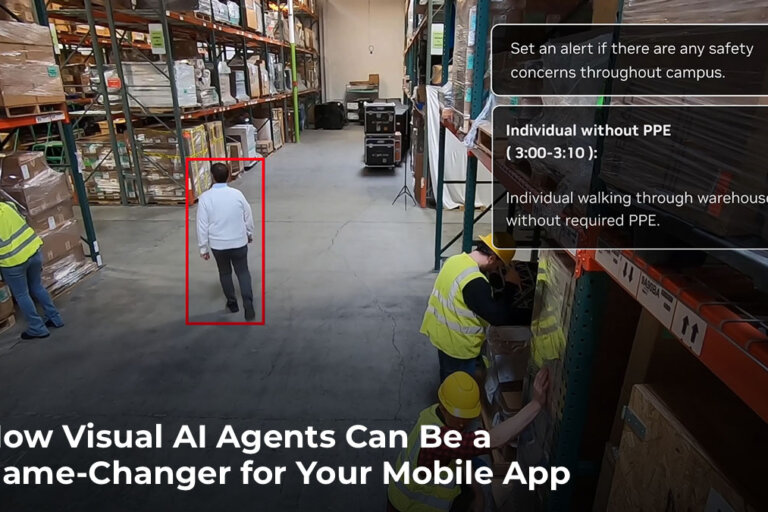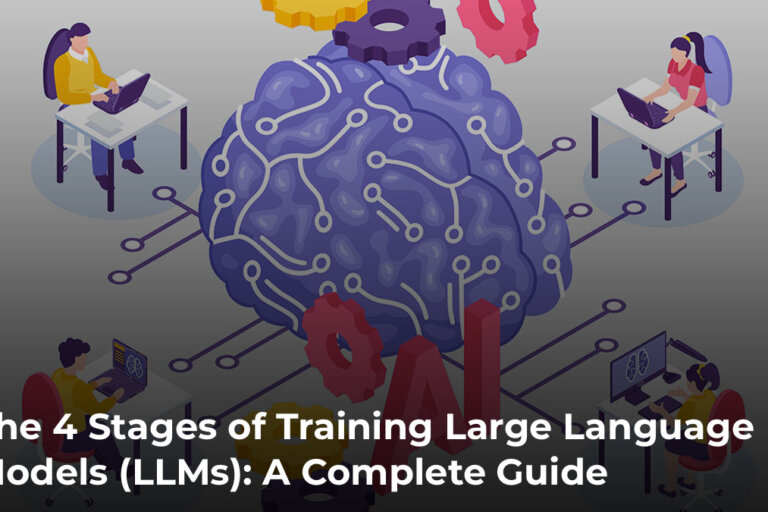Digital Humans: The AI Personalizing Customer Experience at Scale
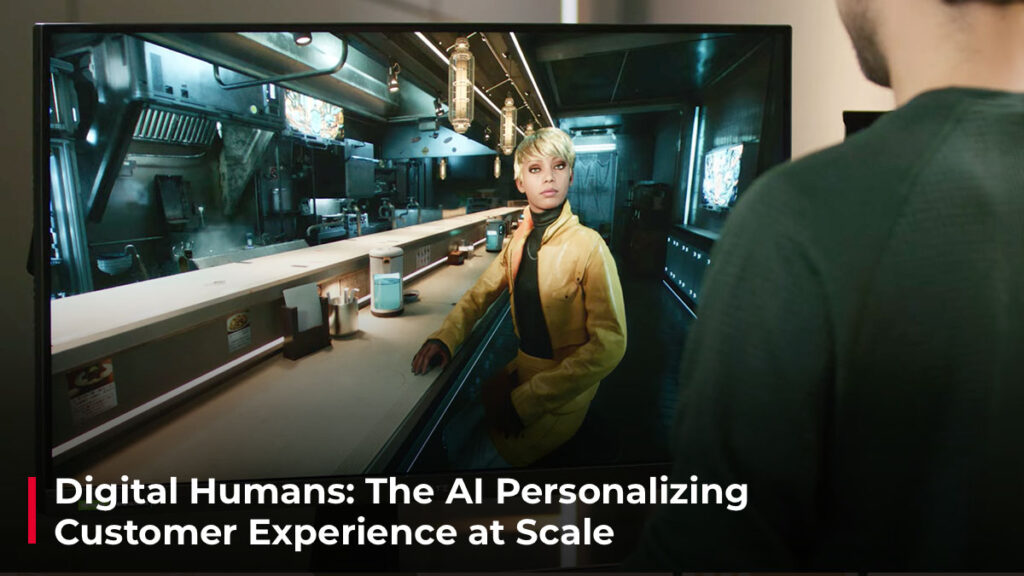
We all know how deeply digital our world has become. Everywhere you look, screens have replaced faces, and convenience often takes precedence over connection. And, the reality is this shift is only accelerating, pulling us further from the days when a smile, a one-on-one conversation, or a simple “How can I help you today?” made all the difference.
Take, for example, when you go to McDonald’s; your experience often begins not with a person, but with a sleek digital kiosk. It greets you, shows you the menu, takes your order, and processes your payment. And just like that, the only human you might interact with is the one handing you your food. For sure, it ticks all the boxes for speed, efficiency, and ease. No small talk, no standing in long queues. For many, especially those who prefer minimal social interaction, it’s even ideal.
But in the pursuit of convenience, we’re losing something valuable. As digital touchpoints multiply, interfaces are becoming increasingly impersonal. They are making experiences feel detached and transactional. The impact of heavy digitalization can be especially isolating for people with visual impairments, who often find navigating these systems challenging, frustrating, and exclusionary.
This is where digital humans come in. These AI-powered avatars are reintroducing humanity into digital experiences, helping us feel truly seen, heard, and understood.
What is a Digital Human?
Digital humans are emotionally intelligent, AI-powered 3D virtual beings that look, move and communicate like real people. As the name indicates, they are designed for humanizing technology—bringing warmth, relatability, and emotional nuance to conversational interfaces for a more meaningful and engaging user experience.
At the front end, digital humans are highly realistic, computer-generated avatars with expressions, gestures and voices that are truly convincing. They can hold conversations, convey a wide range of emotions, mimic body language, interpret feedback, and pick up on subtle facial cues. Through seamless text-to-speech and speech-to-text systems, the digital humans can adapt and respond in real time, making interactions feel remarkably natural.
But what’s happening behind the scenes is quite fascinating.
They’re powered by a sophisticated blend of interconnected conversational AI technologies that work in tandem. This includes speech recognition to hear you, natural language processing (NLP) and large language models (LLMs) to understand, translate and generate replies, emotional AI to pick up on feelings, advanced 3D modeling and rendering engines for their lifelike appearance, real-time animation for their movements, and computer vision to interpret your facial expressions and body language.
With this powerful combination of technologies, these expressive AI beings can communicate in a way that feels genuinely human.
And because their appearance is so human-like, users often feel like they’re talking with someone genuinely present—someone they can relate to and connect with. Whether it’s a friendly smile, a reassuring tone, or a subtle head tilt, digital humans can deliver deeply personalized interactions across every digital touchpoint. Meaning that, these intelligent systems are capable of effortlessly turning every interaction into something that feels natural, personal, and all the more memorable.
On top of that, their multilingual capabilities are a game-changer. Digital humans can effortlessly break down cross-cultural and linguistic barriers. This allows organizations to provide globally consistent, human-centered services around the clock, which significantly enhances the reach and effectiveness of their platforms.
Thanks to all their nuanced capabilities, they are redefining how we interact with technology and are emerging as the next big leap in human-machine interaction. With rapid advancements in AI-driven platforms, it’s no surprise that the global digital human market is projected to reach $625.82 billion by 2032.
So, whether you’re booking a hotel, getting medical advice, playing a game, or learning something new, chances are, you’ll be talking to a digital human sooner than you think.
Real-World Applications of Digital Humans for Better Customer Experience
Hospitality & Travel
In the fast-paced world of hospitality and travel, delivering top-tier customer service is absolutely critical. It’s how brands build a stellar reputation, ensure service integrity, and, most importantly, encourage guests to choose them again and again for future adventures. Given the dynamic nature of this industry, having an AI-powered human-like avatar presents an incredible opportunity.
Take the AI-powered digital concierge, you’re starting to see in pretty much every modern hotel. They are quietly changing the way things work, making operations smoother and the guest experience feel more thoughtful and seamless. You might find it on a lobby screen, built into your room’s tablet, or right inside the app you used to make your booking. Wherever it shows up, it’s becoming a core part of how hotels serve their guests.
It doesn’t just answer queries; it greets guests with a warm, human-like tone, responds naturally, and seamlessly adjusts its responses based on context. So, whether you’re hoping for a personalized room upgrade, need to book a spa day, arrange an airport pickup, or just want an extra towel at 2 a.m., they’ve totally got your back.
From super-fast check-ins and check-outs, and personalized suggestions to 24/7 assistance, and even real-time communication with hotel staff, digital humans are transforming every interaction into an intuitive and frictionless experience. They chat, suggest, help, and adapt just like a seasoned concierge but with perfect memory and zero off-days.
What once required multiple touchpoints and staff coordination is now handled by a single, intelligent layer of technology. This means your whole trip feels not just quicker and more efficient, but surprisingly personal and incredibly convenient.
Gaming
Gaming is another area where digital humans are making a jaw-dropping impression. For the longest time, we’ve interacted with NPCs (Non-Player Characters) that, let’s be honest, often felt a bit rigid with pre-written dialogues, limited facial animations and scripted actions.
If you’re a frequent gamer, interaction with these NPCs can sometimes feel dull and boring due to their repeated actions and replies. But now, with the incredible rise of digital humans, the entire gaming experience is undergoing a fantastic transformation.
These new-gen NPCs can actually learn, adapt to your play style, and respond just like real people. They’re not just sitting in the background anymore. These characters can build relationships with players, make their own decisions, and subtly shift the storyline through reinforcement learning. That means every time you dive into the game, you’re getting a unique experience that keeps you engaged and coming back for more.
And it’s not just limited to human characters. This advancement is also paving the way to bring fantastical races and monstrous foes to life with unprecedented realism and effortless control.
A prime example of this innovation comes from NVIDIA with its ACE (Avatar Cloud Engine) microservices. It is a powerhouse suite of microservices built specifically for real-time digital characters. It gives developers everything they need to build end-to-end 3D avatars that can carry on conversations with players and respond instantly, just like real people, without any annoying lag. They can layer in high-quality features like natural language understanding, expressive speech, and lifelike facial animations, all of which push gameplay immersion to a whole new level.
Whether deployed via the cloud or running directly on your local PC, NVIDIA ACE provides a complete AI platform. It includes a suite of advanced AI models that are crucial for building these groundbreaking digital humans, such as:
- Riva ASR: For understanding natural language – turning what you say into text.
- Riva TTS: For generating realistic, expressive speech – giving the AI a voice.
- Audio2Face (A2F): For animating lifelike facial expressions with precise lip movement directly from audio.
- NeMo LLM: Large Language Models for complex reasoning and intelligent conversational responses.
We are yet to see what else these digital humans hold further in the gaming industry. And it’s sure that their applications are set to benefit a wide range of experiences beyond just games.
If you are curious to dig deeper into this strategic shift and see how these NPCs have evolved, be sure to check this video out:
And if you’re building a game and want this kind of next-level character interaction, we can help. As a game development company, we build these kinds of intelligent, emotionally rich experiences right into your gameplay. We’re all about making your game feel more alive and more memorable for every player.
Healthcare & Digital Wellness
In today’s fast-evolving world, especially within healthcare, emotional support has become incredibly important. Healthcare providers are recognizing this and are increasingly adopting emotionally intelligent platforms to deliver a more compassionate and streamlined service. By integrating these empathetic AI avatars into their digital ecosystems, they’re not just boosting efficiency and patient engagement; they’re genuinely helping people cope better and feel more supported throughout their health journey.
A good example that would fit here is Capgemini’s Anna. This award-winning digital human avatar has been making waves across the healthcare sector due to her unique ability to balance realistic, empathetic responses with the strict regulatory standards required in healthcare. She can explain complex medical information in simpler terms, deliver emotional support during challenging times, or even act as a friendly care provider who can effortlessly guide you through the administrative tasks.
Anna is even built on the Google Cloud Platform (GCP), giving her the flexibility to seamlessly scale up or down based on patient demand or specific needs, ensuring consistent, high-quality interaction within a professional setting.
Beyond formal healthcare settings, AI is also making a significant impact in personal digital wellness.
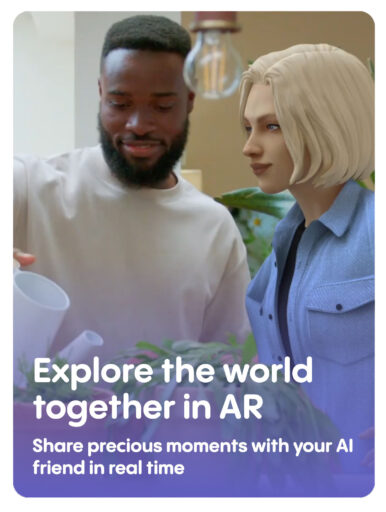
Replika is a fantastic example of this. Known as an empathetic AI companion, it genuinely aims to be there for you whenever you need someone to talk to. Users can interact with Replika through AR (Augmented Reality) or video calls, experiencing a new level of connection and gratification they might not always find from friends or family. Replika is designed to encourage, support, and always share positivity, especially for those grappling with loneliness or seeking a more optimistic outlook on life.
Many users have even shared personal stories, crediting their positive, human-like interactions with Replika for helping them navigate challenging emotions and lead a happier life. It’s important to remember that while highly beneficial for personal well-being, Replika is a companion tool, not a substitute for professional medical or psychological treatment.
This blend of institutional efficiency and personal emotional support showcases the diverse and profound ways digital humans are reshaping how we experience care and well-being.
Beauty & Skincare
As we all get more into understanding our skin and what it needs, beauty businesses are seeing a huge opportunity. They’re jumping on board with cool digital human technology to reach more people and offer super personalized experiences.
So, here’s Eve, Kiehl’s digital skincare expert. This expert digital human can actually analyze your skin. They can check for wrinkles, look at its texture, and figure out exactly what it needs. She then suggests the perfect products just for you and gives out pro skin advice on a massive scale, all while being super friendly and easy to talk to. This AI-powered avatar is helping Kiehl’s strengthen its brand presence by combining expertise with a friendly, high-tech touch. It shows they’re all about innovation and using tech to give customers the best service possible, making sure you get that same great value whether you’re in-store or online.
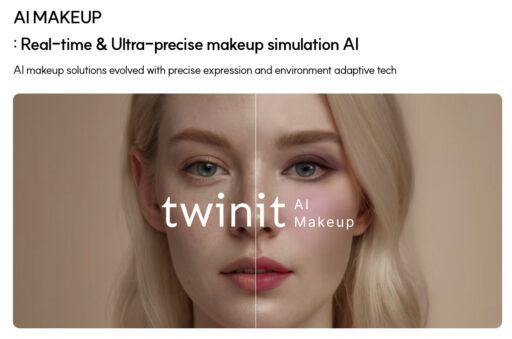
Then there’s Twinit AI Makeup, another awesome digital human system that’s totally changing how we engage with beauty and cosmetics products around the world. You’re starting to see these AI-powered skin pros pop up in standalone devices, especially in big international airports and major shopping centers. What’s even cooler is that they’re not just giving advice on the spot. They’re also collecting data through smart 3D skin analysis and real-time simulation technology. That data is then used for research and product innovation, leading to even more amazing anti-aging solutions and personalized beauty concoctions.
Education & Training
We’ve all been there: staring at a textbook or a video, feeling like the concept just won’t “click.” Imagine having a virtual mentor who could explain complex concepts in a way that truly works for you. Someone who not only understands and remembers your unique learning style but can also offer emotional support, adjusting their teaching methods when you hit a difficult patch.
This is exactly what digital humans are achieving. These AI-powered virtual instructors aren’t just for high-tech classrooms. They’re emerging as personalized tutors, trainers, language partners, and even supportive figures for students.
They can seamlessly guide you to the right resources, walk you through demonstrations, and answer your questions in real-time, often providing examples just like a human teacher or trainer would. What’s more, where human educators might struggle to provide one-on-one attention or address every individual query, digital humans excel. They can offer tailored assistance to individual learners, which also significantly boosts operational efficiency in workplace training. They can help employees based on their specific skills and knowledge, guiding them to excel in particular areas or domains. For students who thrive with individualized attention or those who struggle with anxiety, a digital human offers a calm, patient, and completely non-judgmental way to learn and communicate.

Take Digital Einstein, for instance, a brilliant initiative by UneeQ that reimagines Albert Einstein as a lifelike digital character, allowing users to engage with his personality and wisdom through an interactive, AI-driven experience. Instead of just poring over books or online sources, curious minds can actually have a real-time conversation with Digital Einstein. He can answer science-based questions and even conduct quizzes to test your understanding.
Right now, educators, EdTech platforms, and even exhibition booths are enthusiastically embracing this new era of AI avatars. With a relatable face that sparks inspiration, curiosity, and a spirit of experimentation among young learners, digital Einstein is poised to make learning more fun, engaging, and genuinely interactive for everyone.
Marketing
With the rise of digital humans, brands are finding innovative ways to strategize their marketing efforts. Beyond traditional advertising reserved for real-world influencers and celebrities, brands are also teaming up with AI-powered digital humans to deliver more immersive, emotionally resonant storylines.
They are now serving as virtual brand ambassadors, fashion models, interactive storytellers, and even metaverse personalities that are effortlessly capable of creating deeper, more dynamic connections with audiences. With these digital humans, brands are able to personify their values, promote products, and lead creative campaigns across platforms like Instagram, TikTok, YouTube, and even in virtual reality environments.
Take NOONOOURI, for example. She is a high-fashion digital influencer who’s made a name for herself on Instagram and TikTok. With her signature look and outspoken voice, she promotes sustainable fashion while collaborating with major luxury brands like Dior and Versace. She’s even stepped into the music space, partnering with artists and blending pop culture into her content. She feels fresh, fun, and future-forward, making her a perfect fit for brands trying to reach Gen Z audiences that crave both creativity and authenticity.

Then there’s Shudu Gram, the world’s first digital supermodel and one of the most visually realistic avatars out there. Created using 3D design, Shudu’s lifelike presence is nearly indistinguishable from a human model. She’s worked with brands like Fenty Beauty, Cosmopolitan and Balmain, offering a level of visual and emotional immersion that pulls audiences deeper into the fashion experience. Her carefully crafted imagery and striking digital presence help brands tell stories that feel artistic, modern, and emotionally engaging.
Unlike traditional marketing assets, what makes these digital ambassadors truly powerful is their ability to maintain brand integrity, deliver consistent messaging, and be available 24/7 without any of the usual limitations of physical production. They can be styled, scripted, and deployed globally across any platform in real time. With lifelike animation, expressive emotion, and stunning realism, they tell stories in a way that’s uniquely tied to their persona.
Telecommunication
The telecommunications industry is currently experiencing a quiet revolution. And, it’s not surprising that AI-powered digital humans are leading the charge, considering their growing popularity and efficiency. Companies are recognizing the crucial role of giving a face to AI interactions. While the answers these digital humans provide might be similar to what a chatbot offers, the addition of a face and emotional intelligence significantly enhances customer communication.
Take, for instance, Deutsche Telekom, a powerhouse in European telecommunications. They’re elevating their customer service by integrating UneeQ’s digital human assistants. Through their Telecom app and website, a “family” of these digital humans now attends to customers. The efficiency of these digital avatars is remarkable: Deutsche Telekom has seen an impressive 5.6% increase in conversion rates and a 9% reduction in cart abandonment.
Deutsche Telekom’s strategy focuses on providing a human-like guide with realistic synthetic voices. These digital concierges are designed to tackle complex technical issues and provide an engaging interaction experience at scale. These competent, high-fidelity avatars are exactly what the brand needed. They’re friendly, approachable, and autonomous, equipped with deep product knowledge to explain things clearly. They can answer questions, suggest strategies, offer recommendations, and even guide users to the right products and services based on their needs, all without putting them on hold.
The outcome? Customers can easily navigate complex product choices and, if the digital assistant can’t fully resolve an issue, they can connect with a human consultant immediately.
So, what does all this mean for us?
Ultimately, what’s clear is that digital humans are fundamentally reshaping how customers interact with brands and access services at scale. We’ve seen how these incredibly diverse, interdisciplinary AI avatars are being crafted to behave and respond just like real people. It’s an exciting leap forward, truly bringing the vision of a more connected digital era to life—a kind of co-evolution between technology and humankind.
In all the examples we’ve explored, the core mission of digital humans is to enhance your customer experience in a way that feels genuinely personal and human. They’re designed to make interactions smoother, more intuitive, and far less frustrating.
Now, it’s totally fair to wonder about things like privacy and data security when we’re interacting with such advanced AI. These are valid concerns that companies are constantly working to address responsibly, building trust as the technology evolves. But setting that aside for a moment, the sheer potential of these digital avatars is truly captivating.
Considering the capabilities they already possess, from empathetic conversations to instant, knowledgeable assistance, it sparks a real sense of curiosity about what’s next. We’re truly just at the beginning of this journey, witnessing industries discover innovative new ways to leverage these intelligent beings to make our digital lives even better.

